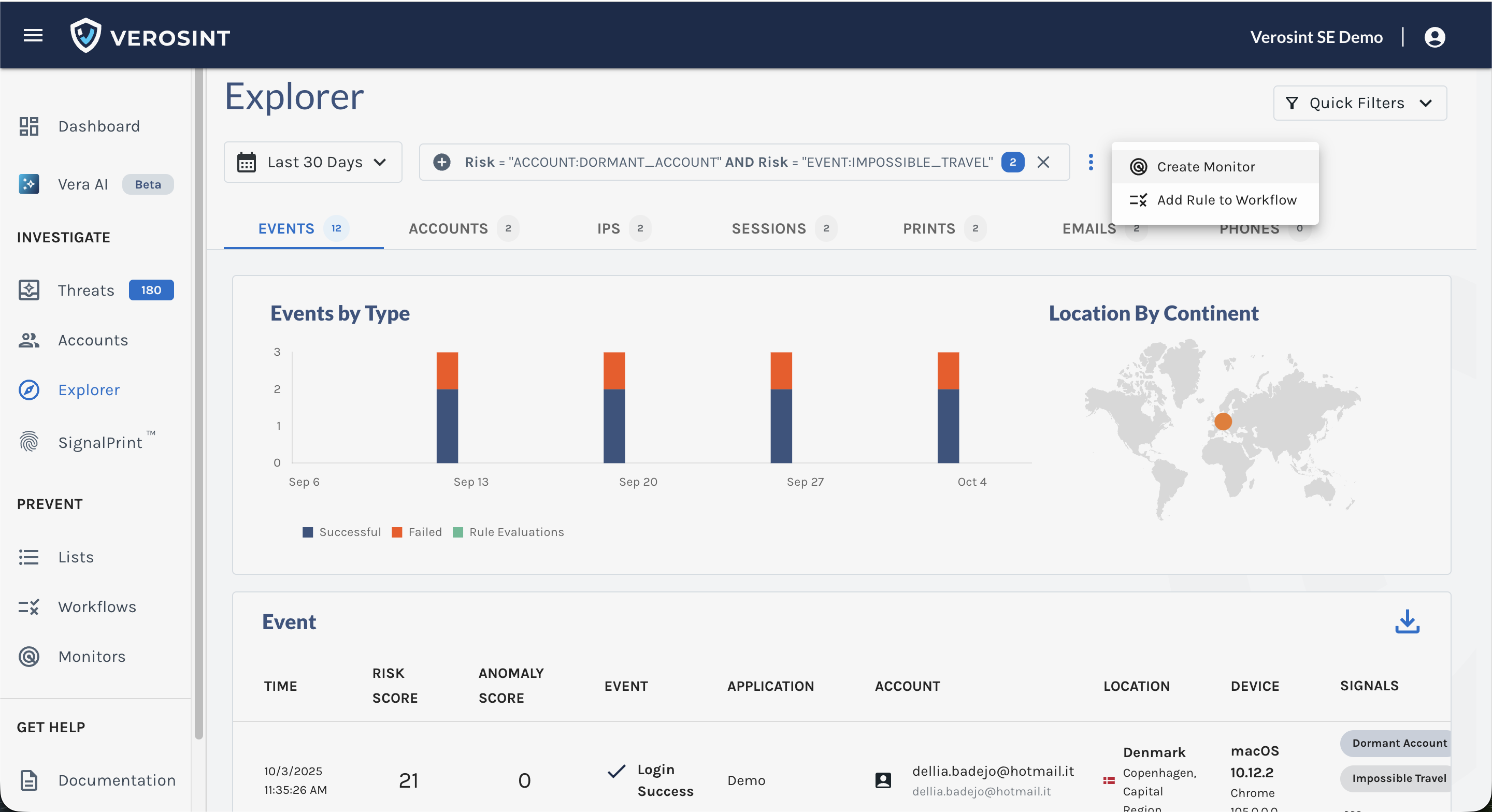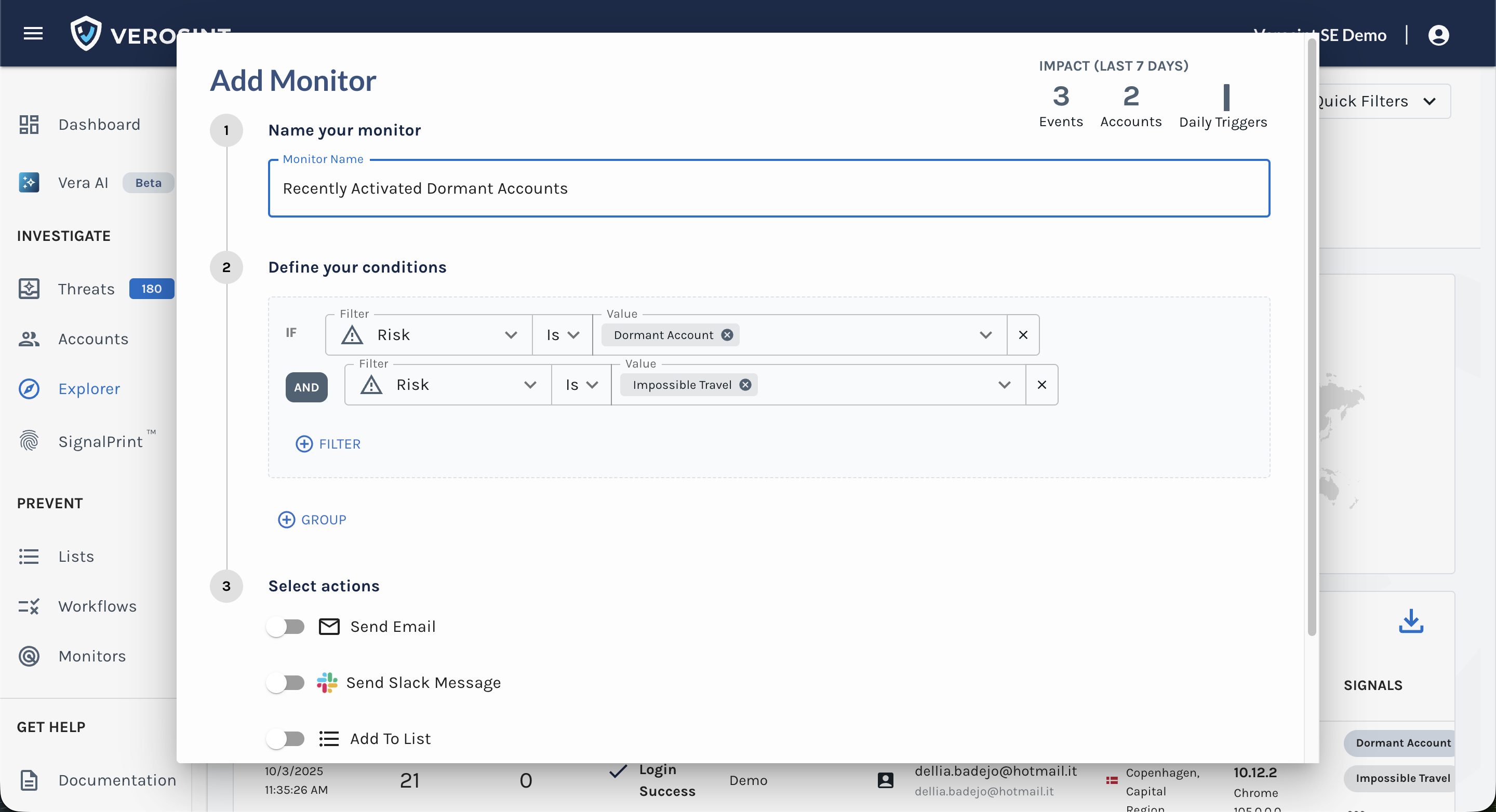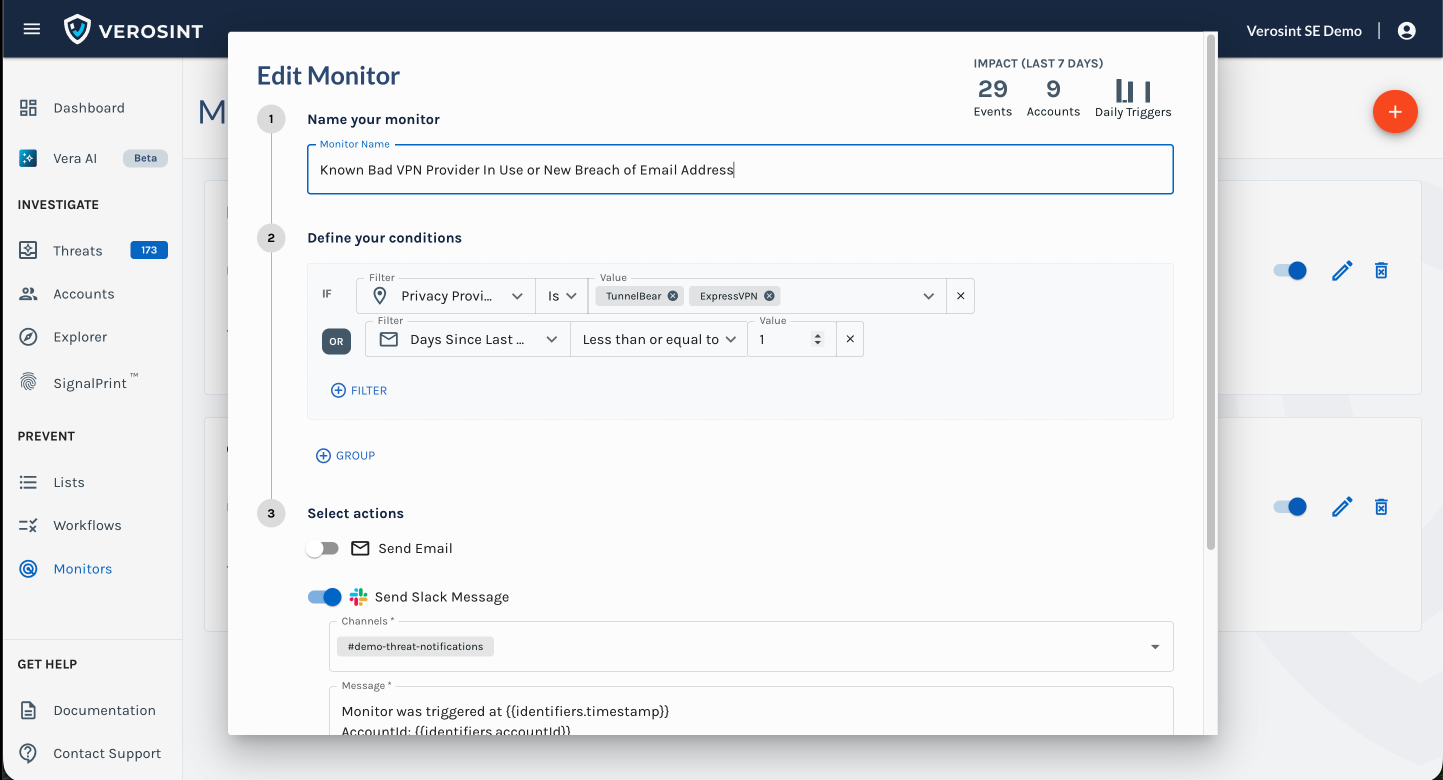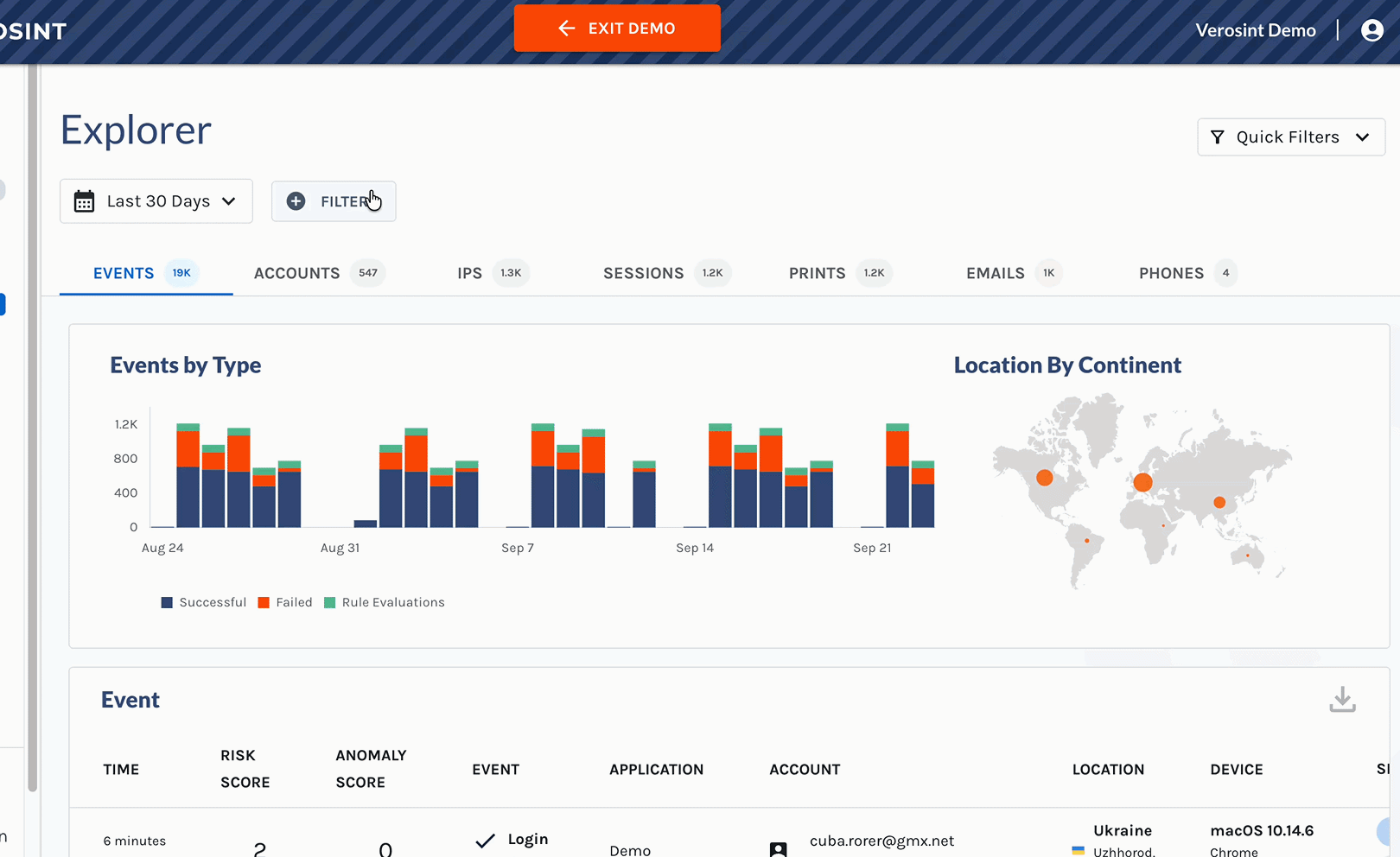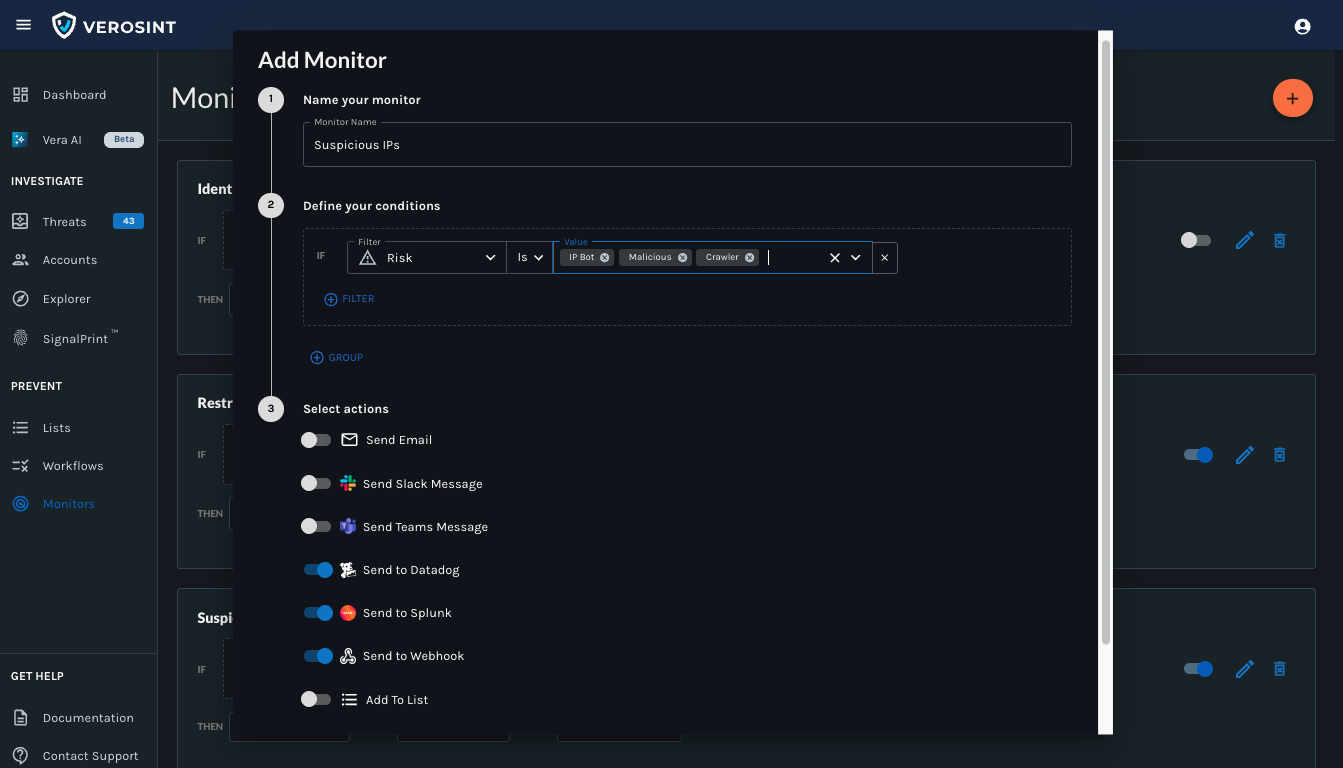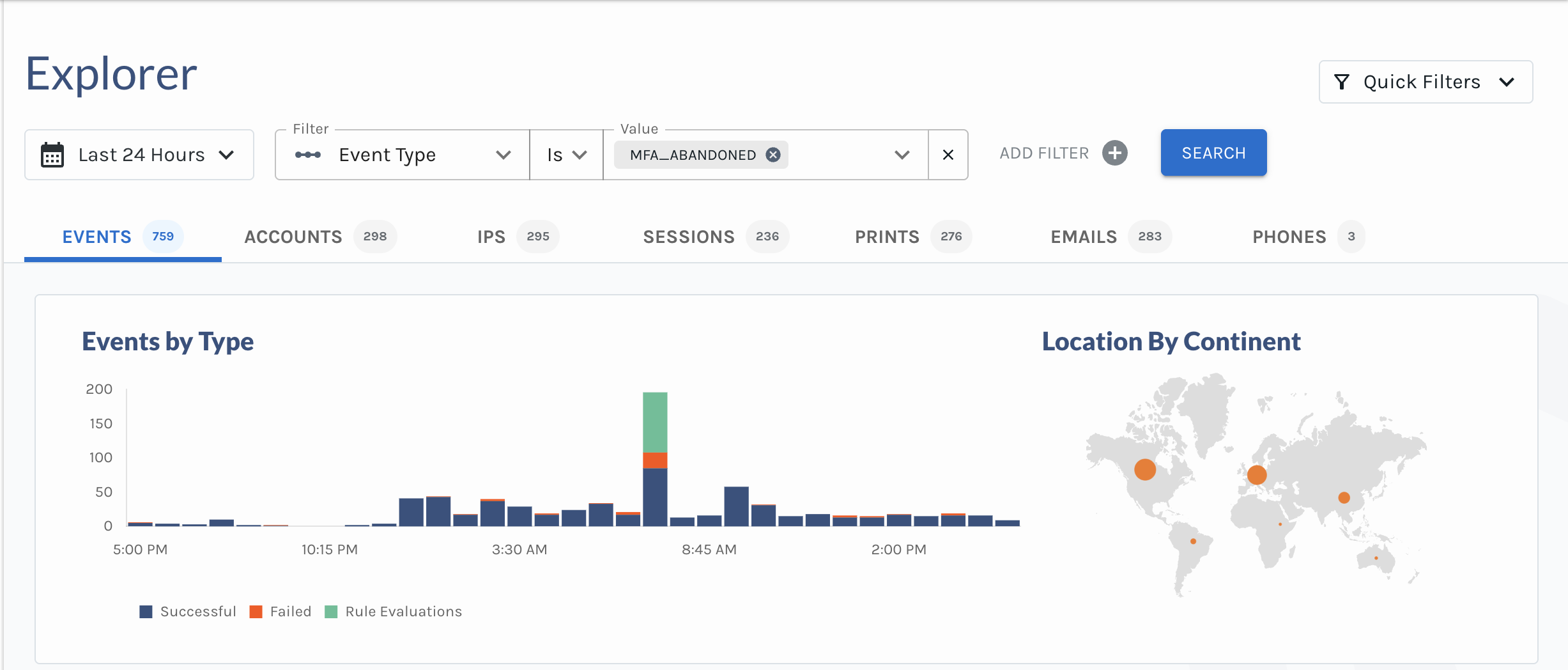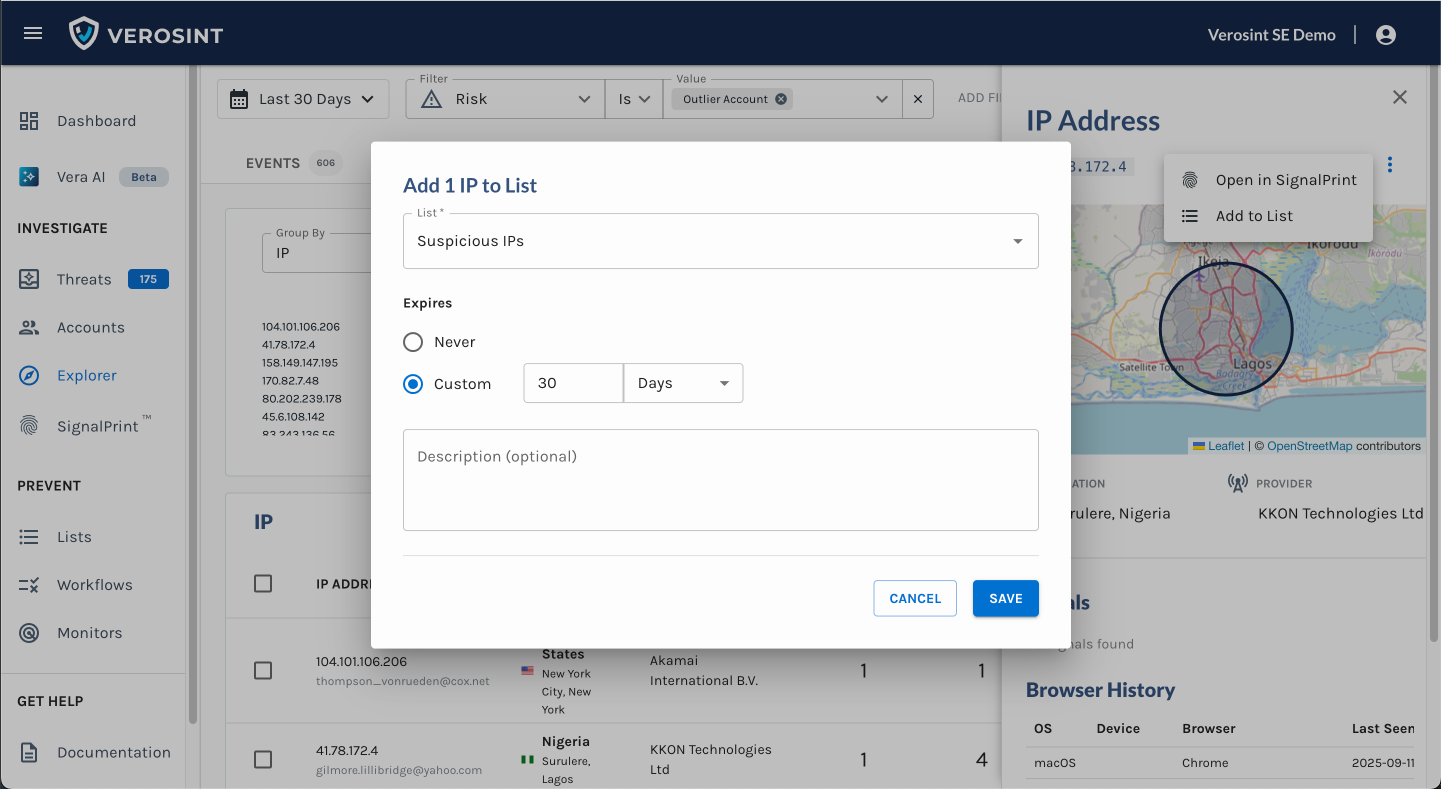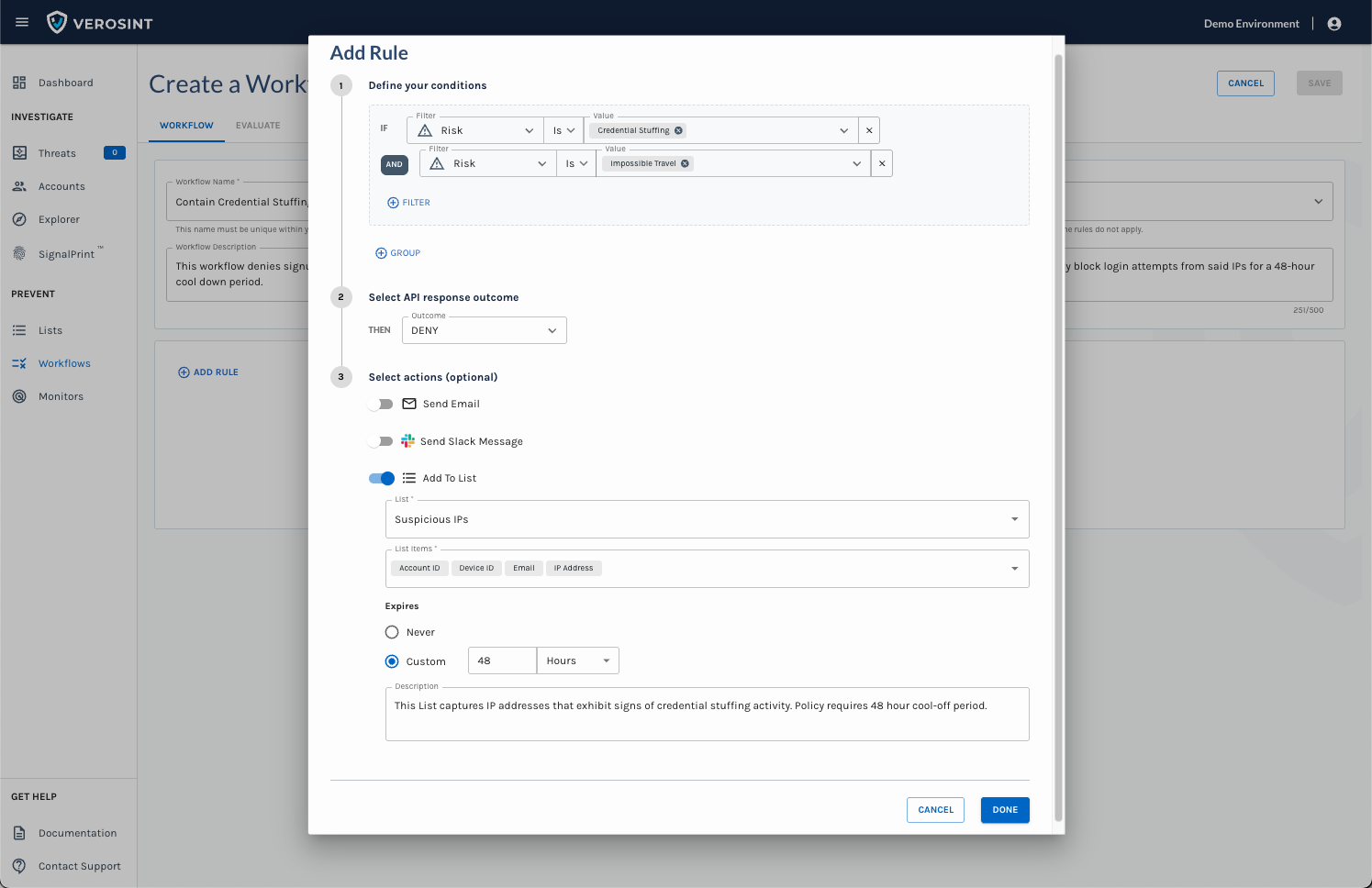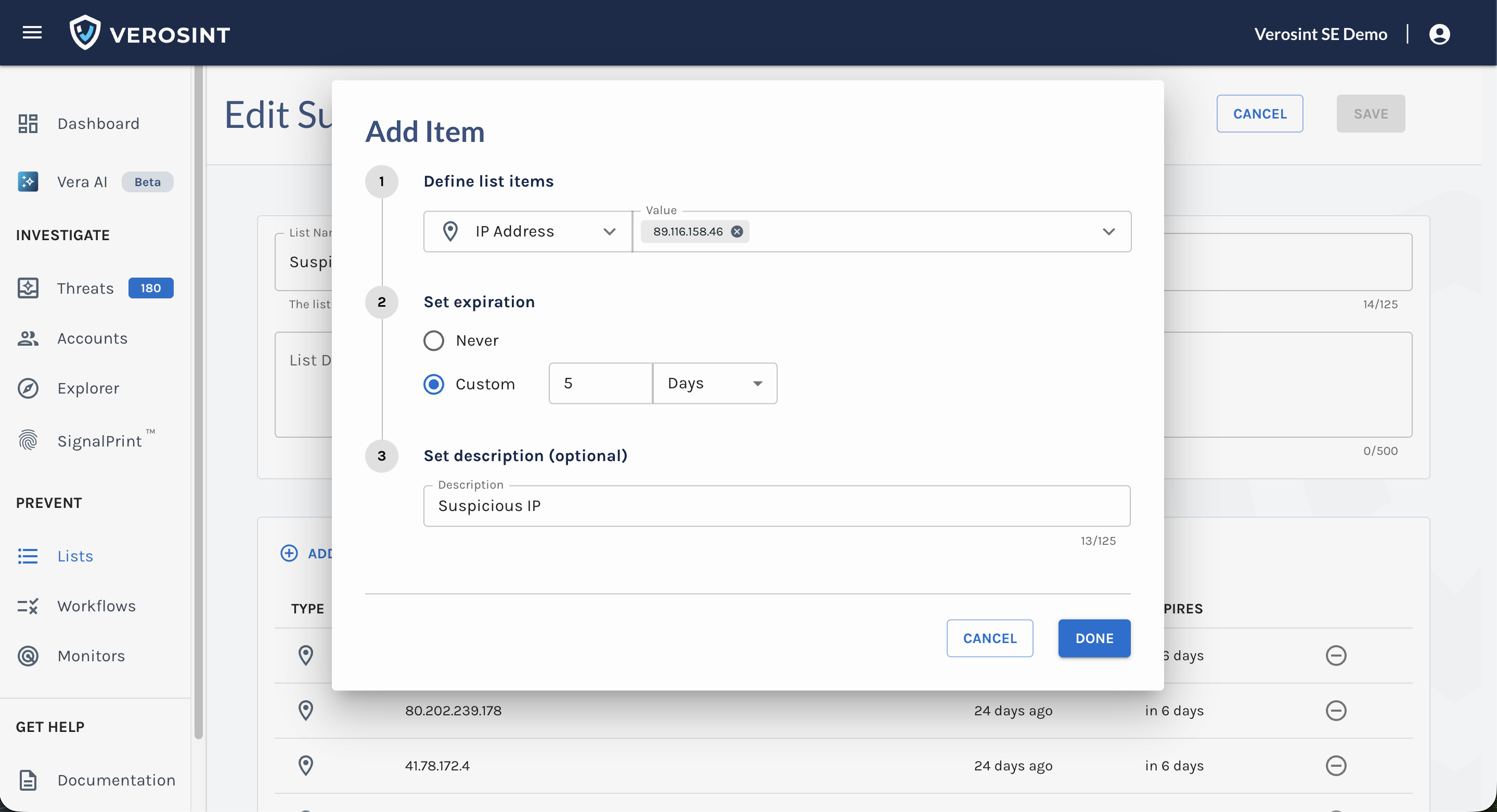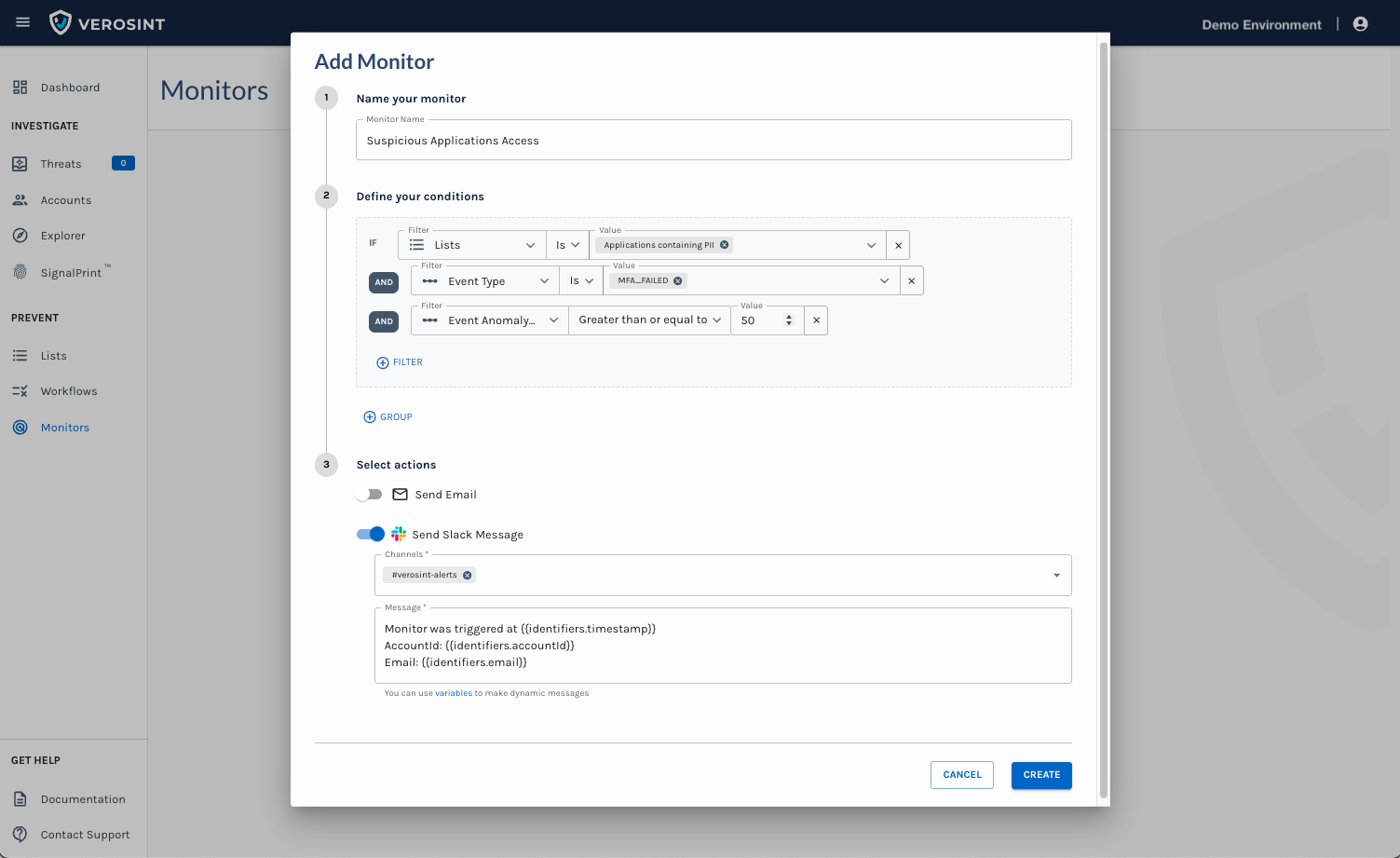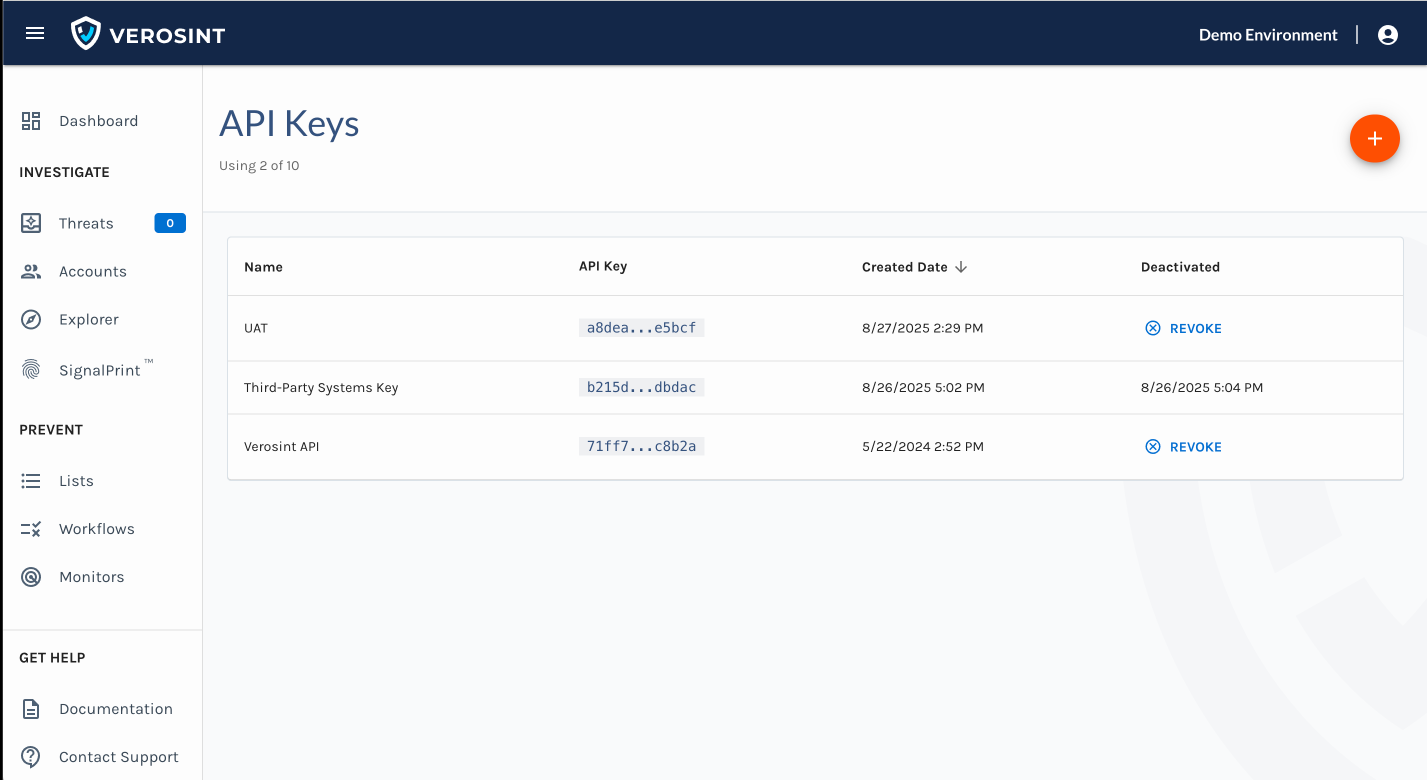🌟 New Feature Alert 🌟
What's New?
-
Verosint now supports the Google Workspace integration.
-
Connect your Google Workspace directly to Verosint. Learn how in our Google Workspace guide.
-
Get actionable insights into suspicious activity, risks, and threats across your workspace.

-
Why Does This Matter?
- Using Google Workspace for your organization? Verosint's got you covered.
- Verosint continuously monitors your environment for risks and threats. Observability and security made easy.
- Security teams can respond quickly to contain threats before they escalate.
** 🚀 Improvements Alert 🚀**
What's New?
-
See Active Search Filters in Event Explorer
-
Your applied search filters are now visible in the header, making it clear what your current search includes. This is especially helpful for simple searches (e.g. Email = "[email protected]").
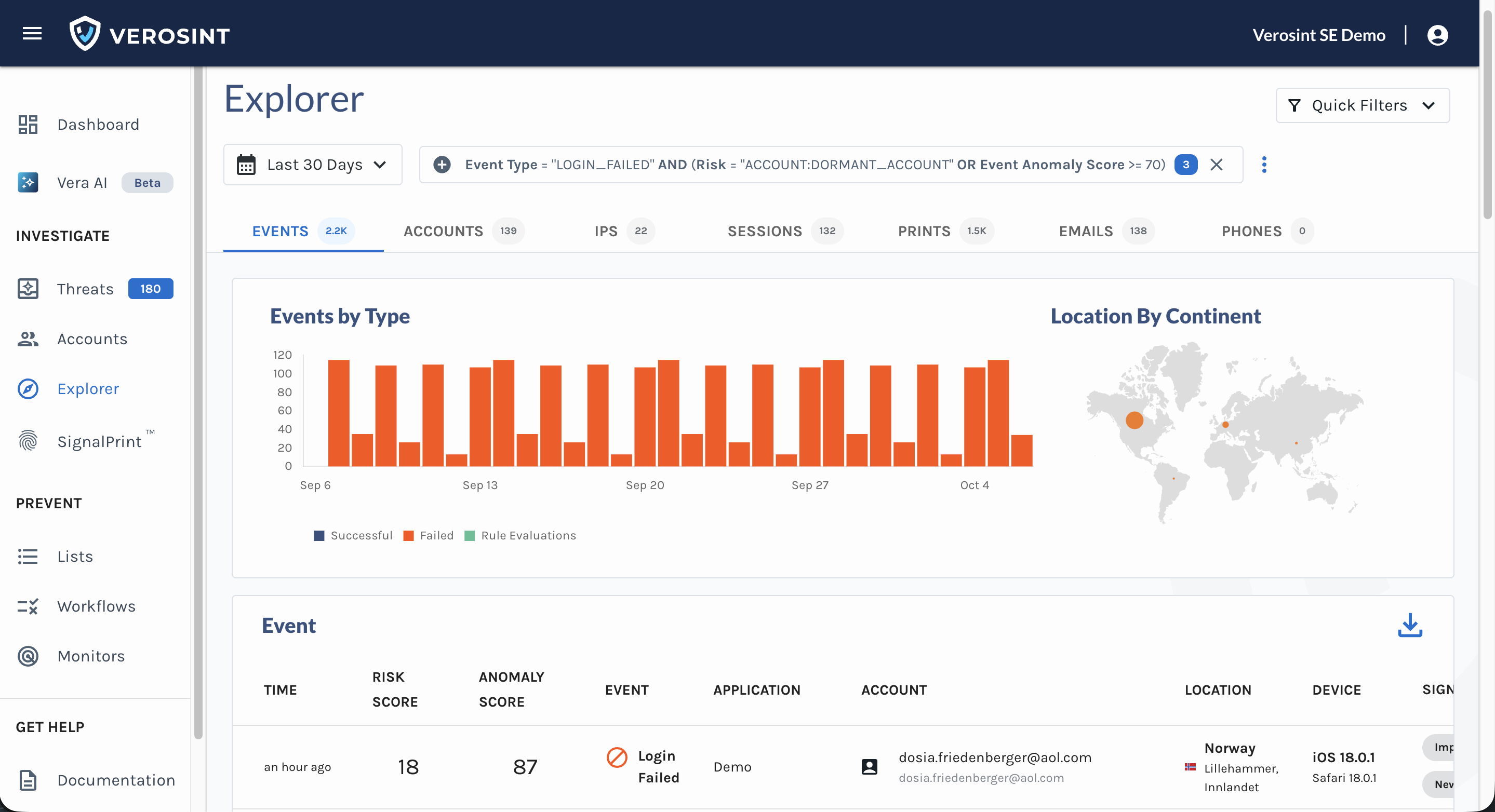
-
For more complex searches (multiple filters), you can still open the Filters modal to see the full details.
-
-
Smoother Email Search Flow in Event Explorer
-
When selecting the Email filter and pasting in an address, the Search button automatically activates.
-
No more hitting Enter or clicking out of the field. One less click to get where you're going.
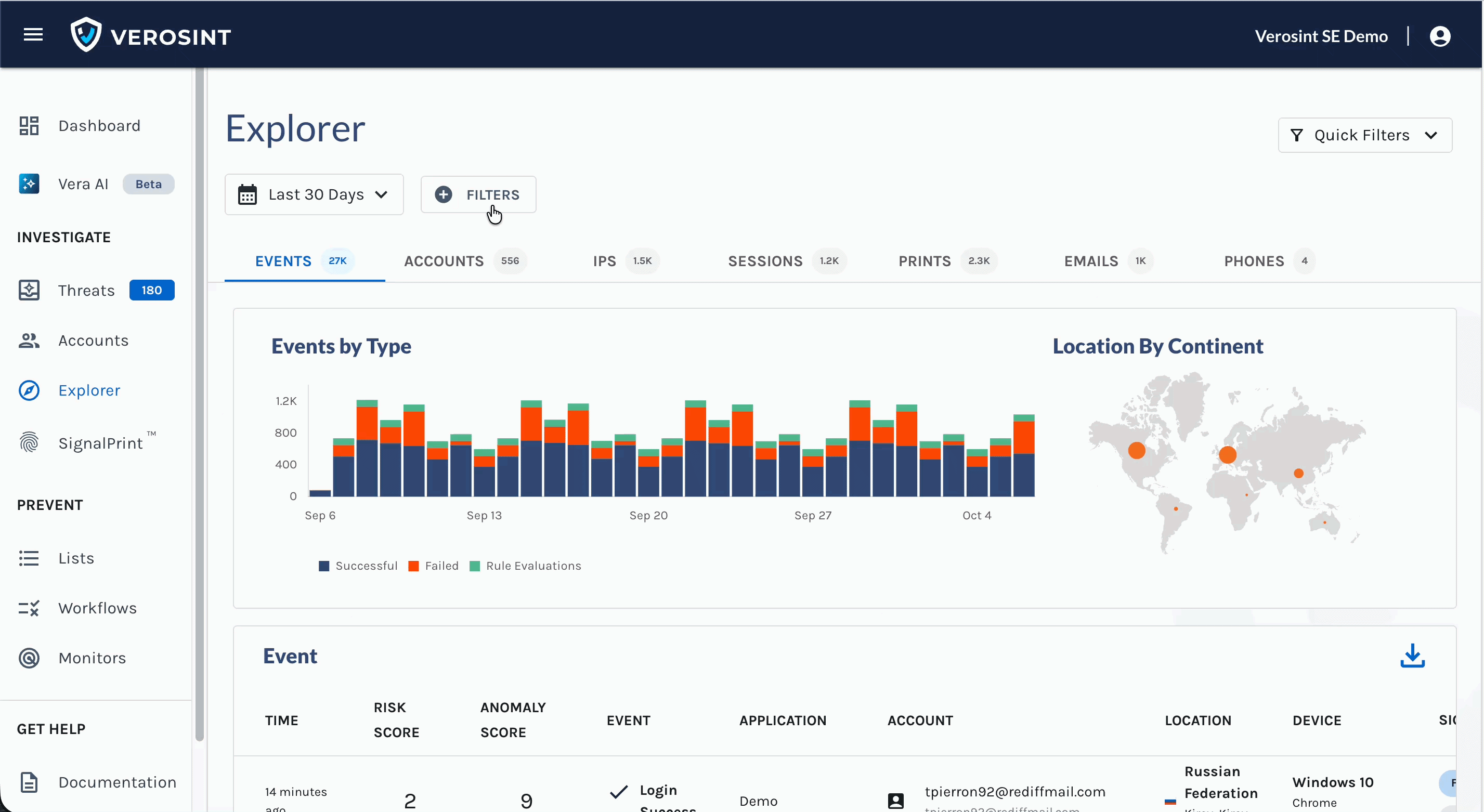
-
Why Does This Matter?
- Faster, more intuitive behavior in Event Explorer.
- Less guesswork about what filters are applied during investigations.
- Reduced clicks --> quicker time to insights.

